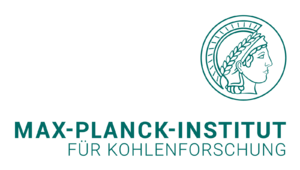Max Planck Institute for Coal Research facts for kids

Official logo
|
|
| Abbreviation | MPI KoFo |
|---|---|
| Predecessor | Kaiser Wilhelm Institute for Coal Research |
| Formation | 1912 |
| Type | Scientific institute |
| Purpose | Research on organic and organometallic chemistry, catalysis and theoretical chemistry |
| Headquarters | Mülheim an der Ruhr, North Rhine-Westphalia, Germany |
|
Key people
|
Frank Neese, Managing Director Tobias Ritter, Director Benjamin List, Director Ferdi Schüth, Director Alois Fürstner, Director |
|
Parent organization
|
Max Planck Society |
The Max Planck Institute for Coal Research (called MPI KoFo for short) is a science center in Mülheim an der Ruhr, Germany. It focuses on special types of chemical research, especially about catalysis. Catalysis is like finding a shortcut for chemical reactions, making them happen faster or better.
This institute is one of 86 similar centers that are part of the Max Planck Society. It started way back in 1912. Back then, it was called the Kaiser Wilhelm Institute for Coal Research. Its main goal was to study coal and how it could be used. In 1949, it became an independent Max Planck Institute.
Contents
What Kind of Research Happens Here?
The institute does basic research in several areas of chemistry. This includes organic chemistry (the study of carbon-based compounds) and organometallic chemistry (where carbon meets metals). They also work on different kinds of catalysis and theoretical chemistry. Theoretical chemistry uses computers and math to understand how chemicals work.
The main goal of their work is to find new ways to create compounds and materials. They want these methods to be precise, efficient, and good for the environment.
The MPI KoFo has been a leader in chemistry research for a long time. For example, in 1925, scientists Franz Fischer and Hans Tropsch developed the Fischer–Tropsch process here. This process can turn coal into liquid fuels. Later, Nobel Prize winner Karl Ziegler worked at the institute. With his student Hans-Georg Gellert, he discovered important reactions involving aluminum compounds. These discoveries helped create new materials.
Meet the Research Departments
The institute is divided into different departments. Each one focuses on a specific area of chemistry.
Organic Synthesis: Building New Molecules
The Organic Synthesis Department is led by Tobias Ritter. Their research is all about creating new ways to build organic molecules. They look for new molecular structures and how they react. This helps them find solutions for many science challenges.
Homogeneous Catalysis: Speeding Up Reactions
This department is led by Nobel Prize winner Benjamin List. They work on new ideas for catalysis. This includes organocatalysis, which uses small organic molecules as catalysts. They also study transition metal catalysis and some biocatalysis (using biological catalysts).
Since 1999, they have focused on making specific versions of molecules. This is like making only left-handed gloves when you need them. They want to find new ways to design catalysts. They also use these catalysts to make natural products and medicines.
Heterogeneous Catalysis: Materials and Energy
The Heterogeneous Catalysis Department is led by Ferdi Schüth. They focus on making and studying inorganic materials. These materials are used in heterogeneous catalysis. This type of catalysis often involves solid catalysts and liquid or gas reactants.
They are especially interested in materials with many tiny holes. These materials have a large surface area. They also study catalysts made of very small particles, called nanostructured catalysts. Their research helps with important energy topics. This includes how to activate methane or store hydrogen.
Organometallic Chemistry: Carbon and Metals
The Organometallic Chemistry Department is led by Alois Fürstner. They study how carbon and metal atoms can bond together. They develop and understand special metal-containing chemicals called organometallic reagents and catalysts. They use these to create complex molecules that are important in biology.
A big part of their work is finding new ways to form carbon-carbon bonds. These bonds are the backbone of many molecules. They also work on reactions like alkene and alkyne metathesis. This involves rearranging parts of molecules. They also develop new types of ligands, which are molecules that attach to metal atoms.
Theoretical Chemistry: Chemistry on Computers
The Department of Molecular Theory and Spectroscopy is led by Frank Neese. This group uses computers and math to understand chemistry. They develop new ways to do calculations, especially for large molecules. They also use these methods to solve specific chemical problems. They often work closely with scientists who do experiments.
Their work covers many different calculation methods. This includes ab initio methods and density functional theory. These methods help them predict how molecules will behave.

